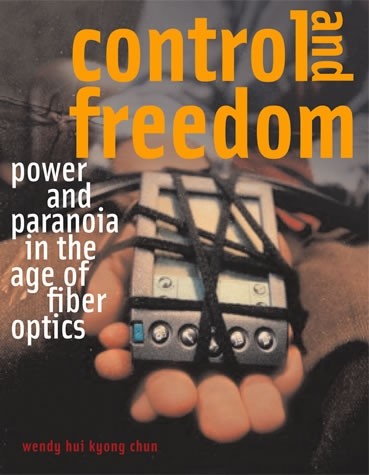Summary of Wendy Chun's "Scenes of Empowerment"
Chun, Wendy Hui Kyong. “Scenes of Empowerment,” in Control and Freedom: Power and Paranoia in the Age of Fiber Optics, 129–170. Cambridge, MA: MIT Press, 2006.
Summary:
In the 1990s, the Internet was viewed as a gateway towards achieving social justice, and this technological deterministic claim has been capitalized by companies to justify their own products as the “solution” – from the consumer’s daily lives to complex societal issues such as racism and sexism (p.144).
In Wendy Chun’s Scenes of Empowerment, she took the example of advertisements such as MCI’S “Anthem” and Cisco System’s “Empowering the Internet Generation” to show how the corporations’ portrayal of a peaceful and socially just world where there are no race, no gender, and no age, actually hurts rather than empower because they conceal actual discrimination. She argued that corporations feed off of people’s blindness towards their own vulnerabilities, “the fact that in order to use, one is used, and that one’s online interactions are fundamentally open- by conflating racial and technological empowerment, color- and technology-blindness” (p.130).
In the subchapter The Race of Users, she elaborated race with the how the body is socially conceptualized, eventually proposing the concept of pornotroping. “Pornotroping reduces a person to flesh-to a sensuous thing embodying sheer powerlessness- and then displays this flesh to incorporate the viewing subject/body” (p.135). She argued that these commercials have capitalized and pornotroped on race to portray a certain “diversity” to satisfy a need: the need for a utopia (p.136). She urged readers to understand its destructive consequences such as its contribution and ignorance towards real-life discrimination.
In the subchapter Digital Dividends, she began with providing statistics of telecommunications used in 1997 according to race to prove that the “diversity” portrayed in MCI’s 1997 “Anthem” did not represent real-life demographics. The statistic showed that historical inequalities still continue and there is still a digital divide among races, and companies take advantage and propose themselves as the answer. She then argued that government and intergovernmental agencies’ positions are allies with these corporations: these bodies tend to promote lower barriers of entry and institutional support for private companies in the name of technological progress in developing countries. She questioned the United Nation’s definition of a “successful” nation and criticized how programs of development focus on decreasing the digital divide through Internet access rather than skills. In the U.S., the digital divide is portrayed as a consumer issue (p.153) where race is a consumer category by tech companies trying to sell their product, arguing that race is, to them, something to be consumed, similar to race-specific porn sites.
In Refusing Markets, Chun presented examples of resistance against these forms of subordination through Mongrel, a software art project “digital collective” based in the U.K. and Jamaica (p. 158). Natural Selection, their search engine, links racist searches to antiracist websites. They take advantage of the Internet’s algorithms to perform an act of resistance towards racism and race-specific fetishes in different spaces of its website, such as Yekwai’s “antiviral” site (p. 160) and National Heritage’s HeritageGold software, a racial parody of Adobe Photoshop. Mongrel’s projects offer an entry to the idea of the Internet as a public medium and the discourse of democracy in the Internet age, elaborating on how representative democracy is a form of disembodiment. Chun ended on the note that the Internet has democratic potential but one should note of its “ideological polarizations around control and freedom” (p. 170).
In summary, Chun argued that the idea of an internet utopia is harmful as it ignored real-life discrimination. Its portrayal of a diverse world does not take into account of the digital divide, particularly on the basis of race. Resistance towards this trend of racial subordination elicited a discourse towards models of democracy that can be delivered through the internet and reiterated that the internet contains the risk of power concentrations and domination from multiple entities, contrasting with the people’s initial ideas of the internet.
